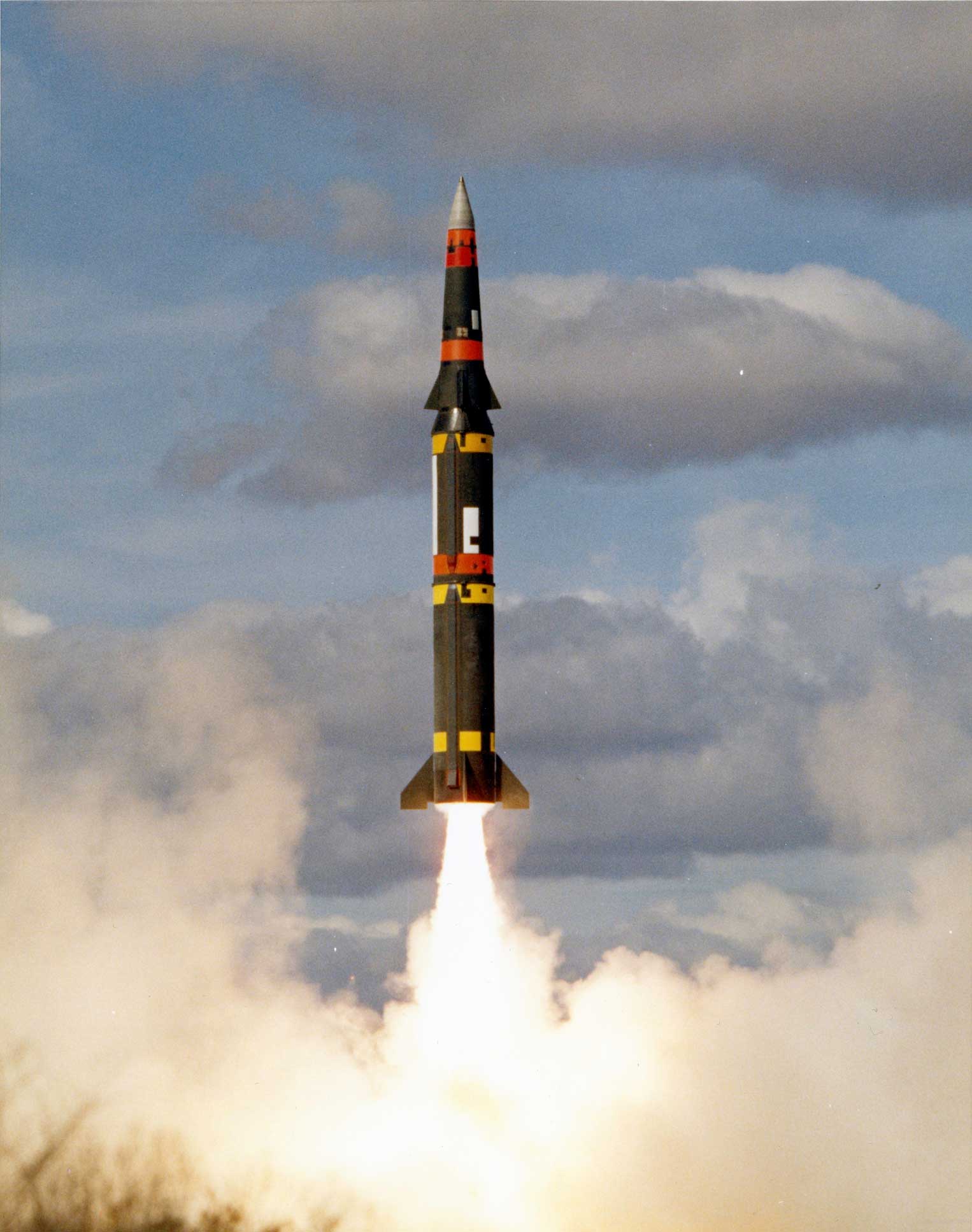The Arms Race Resumes
In the mid-1970s, the Soviet Union achieved rough strategic parity with the United States. Shortly thereafter, the Soviet Union began replacing older intermediate-range SS-4 and SS-5 missiles with a new intermediate-range missile, the SS-20. The SS-20 was more accurate, and capable of being concealed and rapidly redeployed and carried 3 MIRV warheads. This missile was capable of hitting targets throughout Western Europe. The threat of a limited nuclear war in Europe was now a possibility.

The United States pressured various members of NATO to allow the installation of the Pershing II ballistic missile and ground launched cruise missiles in their countries. The proposed deployment prompted mass demonstrations across Western Europe.
Relations between the United States and the Soviet Union continued to worsen. To try to repair relations, both sides began to press for the signing of the SALT II treaty. This treaty set upper limits on their nuclear arsenals, and new weapons technology, such as MIRV warheads and cruise missiles, were counted in the number of weapons each side was allowed.

The SALT II treaty was signed by President Carter and Premier Brezhnev in Vienna on June 18, 1979, and was submitted to the U.S. Senate for ratification shortly thereafter. But renewed tensions between the superpowers prompted Carter to remove the treaty from consideration in January 1980, after the Soviet Union's invasion of Afghanistan. The era of détente was over.
With the election of President Reagan in 1981, the United States began a period of increased military spending. Funding for the highly accurate MX missile and the new Poseidon nuclear submarines was approved. Reagan sought to outspend the Soviets and win the Cold War.
Although America's military build-up concerned them, the Soviets were not in a position to respond. The Soviet Union continued on a course of pursuing détente.